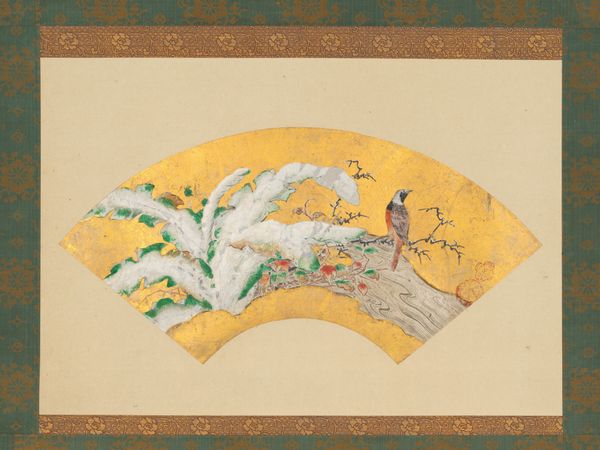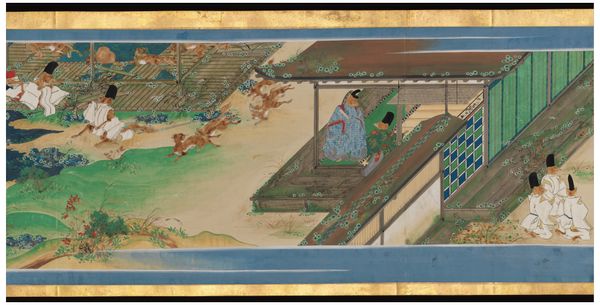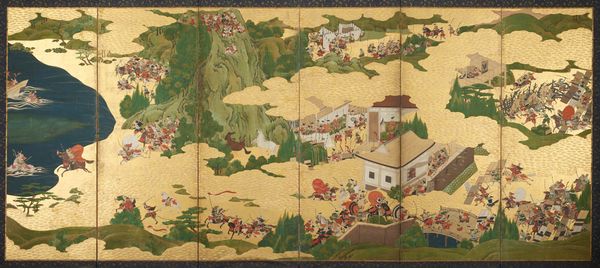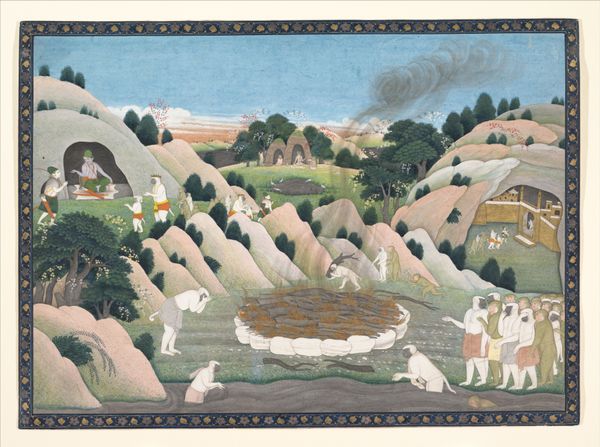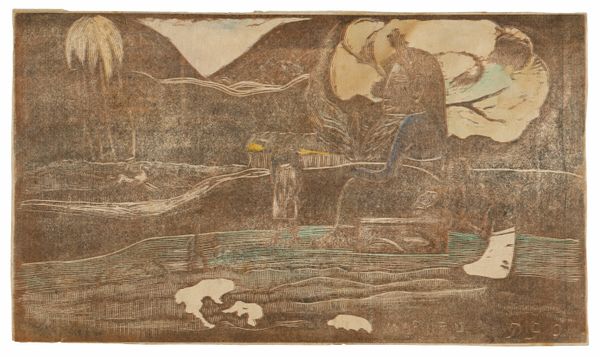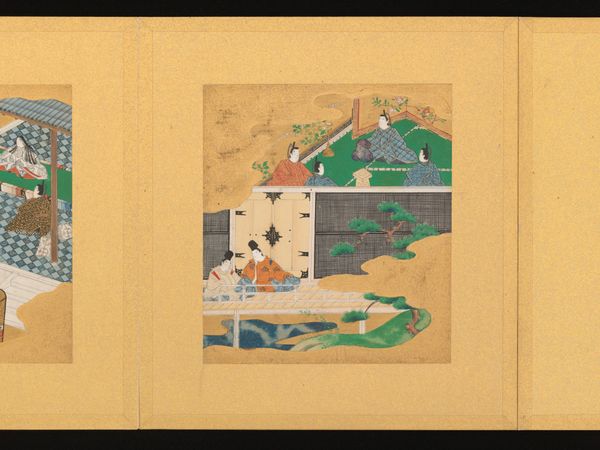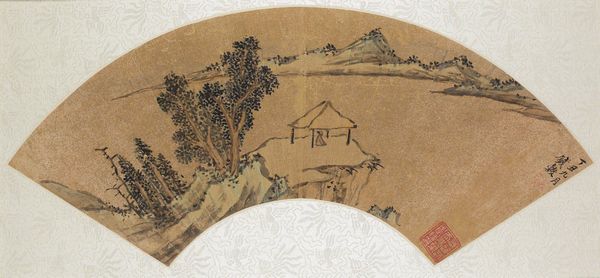
watercolor
#
water colours
#
asian-art
#
landscape
#
folk art
#
figuration
#
watercolor
#
folk-art
#
naïve-art
#
naive art
Dimensions: Image: 13 3/8 x 18 1/4 in. (34 x 46.4 cm); Page: 21 7/8 x 17 15/16 in. (55.6 x 45.6 cm)
Copyright: Public Domain
Editor: Here we have "Maharaja Fateh Singh Hunting Female Bears," a watercolor from 1917, now residing at the Met. It's strikingly flat, almost like a tapestry, and yet there's a sense of depth created by the overlapping hills. I’m curious, what narratives do you see emerging from this piece? Curator: I see a layered commentary on power, gender, and the natural world, filtered through the lens of colonial influence. Note how the Maharaja and his attendant are literally elevated, perched in a tree, visually separating them from both the land and the ‘female bears’ they are hunting. This echoes a common colonial trope of man dominating nature, but there's a gendered element that demands closer consideration: Why specifically female bears? Editor: That’s interesting. I hadn’t considered the gendering of the hunt itself. Is it possible the artist is subtly critiquing this power dynamic? Curator: Perhaps. The “naïve” or "folk art" style, while seemingly straightforward, can also be read as a form of resistance. By not adhering to Western academic painting standards, the artist asserts a different cultural perspective. This visual choice subtly challenges the assumed superiority of Western artistic traditions. What do you think this tells us about the purpose of such hunts? Editor: I suppose they become symbolic then, of dominance and control, rather than simply a sport. This changes how I view the composition entirely; I'm now wondering about what the artist is attempting to reveal rather than simply record. Curator: Precisely. And by engaging with these intersectional narratives, we move beyond a simple description and begin to understand the deeper complexities of the artwork and the society that produced it. Editor: Thanks! It makes me realize how much social commentary can be embedded, even in seemingly straightforward historical depictions.
Comments
No comments
Be the first to comment and join the conversation on the ultimate creative platform.
